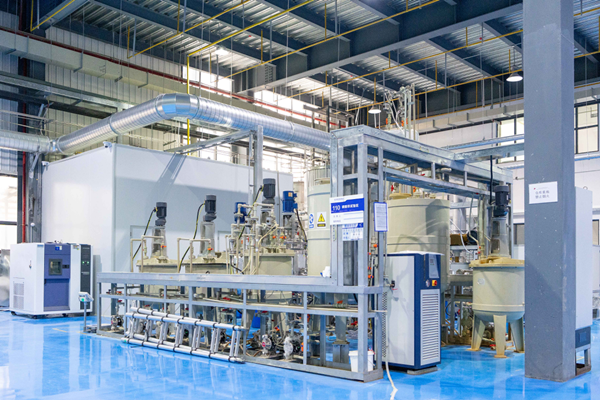

The cathode material pilot production line at the Wuhan Institute of Advanced Technology in the Wuhan Economic & Technological Development Zone. [Photo/WeChat account: whkfq]
The Wuhan Institute of Advanced Technology (WIAT) in the Wuhan Economic & Technological Development Zone (WEDZ) has been recognized as a provincial manufacturing innovation center, as reported by local media on Jan 8.
Established in October 2019, WIAT is a novel R&D institution co-founded by the Shenzhen Institutes of Advanced Technology, the Chinese Academy of Sciences, and WEDZ. It is recognized as a national little giant high-tech enterprise.
The institute has made significant breakthroughs in advanced functional materials, including black phosphorus, microcapsules, aerogels, nano-engineered coatings, composite materials, silicone materials, cathode precursors, and phosphorus-based lithium battery cathode materials.
WIAT has developed key technologies for battery recycling, establishing a pilot production line and enabling full-element recovery of retired power batteries. It has also broken the technological monopoly of foreign manufacturers in thermal expansion microspheres, achieving internationally leading product performance in automotive parts, semiconductors, and other fields.
According to a representative from the institute, WIAT has filed over 200 patents since its inception, independently developed 75 application technologies, and provided R&D services to more than 60 enterprises and institutions. It has also industrialized 24 achievements.
WIAT plans to accelerate the development of general-purpose material AI technologies and platforms. It is committed to advancing scientific breakthroughs, key technological innovations, and the application of advanced functional and energy materials.
Manufacturing innovation centers play a crucial role in integrating resources, developing common technologies, and transforming research outcomes to shape the future of manufacturing.
They serve as hubs for innovation, offering public platforms for research and development, fostering leading talent, and significantly contributing to the transformation of traditional industries, the expansion of advantageous industries, and the rise of emerging sectors.